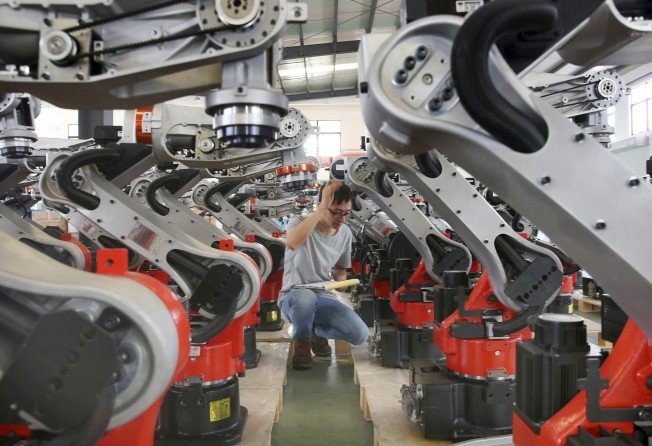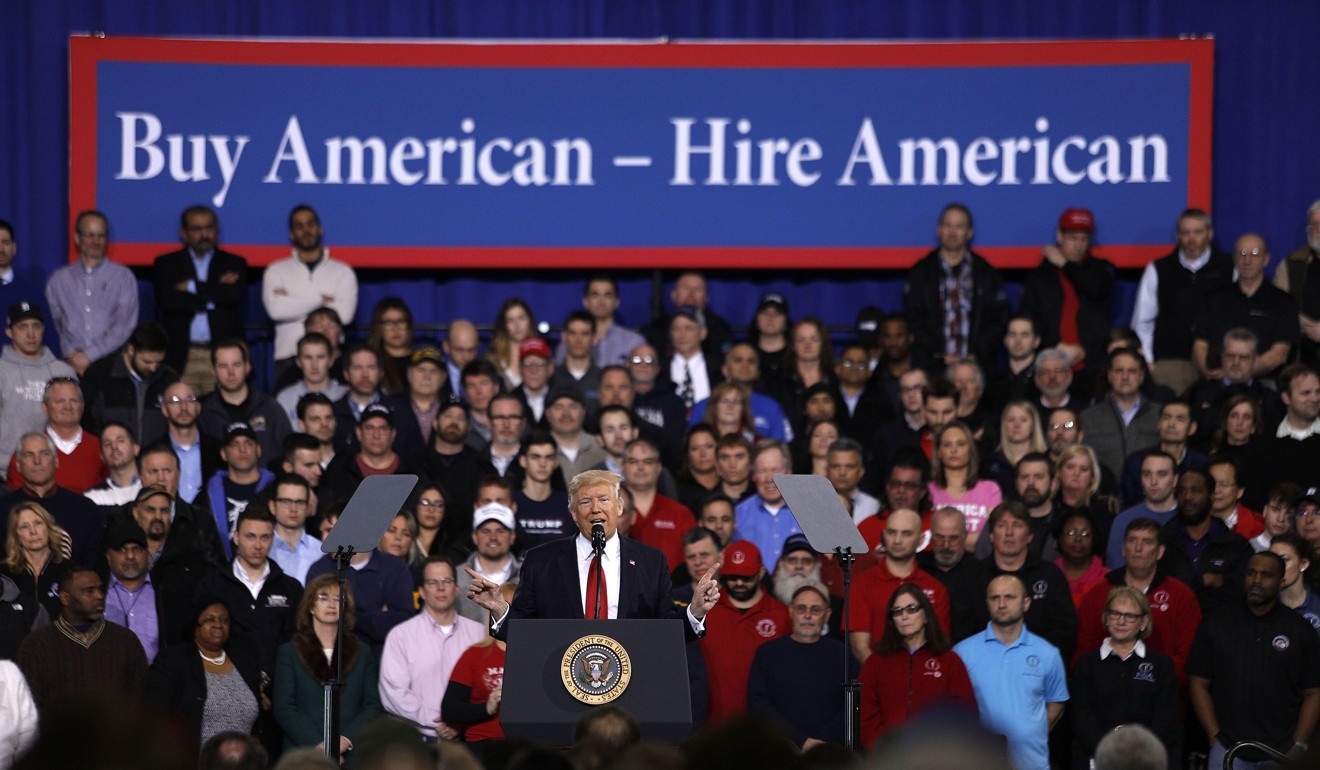As China fights to win US trade war, modern factories are now its weapon of choice
- Trump’s trade war may well be spurring China’s growth strategy, and was probably the reason for the delayed fourth plenum
- A modern manufacturing sector seems likely to top the agenda for policymakers, given comments from President Xi and moves to channel capital away from property

The Communist Party holds its much-anticipated fourth plenary session of the 19th Central Committee later this month. While this piece of news has been overshadowed by the US-China trade headlines, China watchers should be aware of the importance of this meeting, where the Chinese leadership is likely to outline its new strategy for the next few years, especially on how the country will position itself as the trade war drags on.
In fact, the fourth plenum has been postponed by at least a year, as the meeting was supposed to have been held last autumn. The reason for the delay, although an official explanation has not yet been given, was probably the trade war.
This time last year, trade tensions with the US had started to escalate rapidly, and there was no consensus among top leaders on how China should deal with it. The fourth plenum, in which elite party members gather and outline the strategic blueprint, could have been postponed due to the lack of a solid strategy.
However, US President Donald Trump and the trade war may have somehow helped China formulate a growth strategy for the coming years. And topping the agenda, in my opinion, is modernising the manufacturing sector.
Chinese President Xi Jinping would appear to have revealed this new strategy during a recent visit to a manufacturing firm in Zhengzhou.
According to local media reports, during his visit to the Zhengzhou Coal Mining Machinery Group facilities on September 19, Xi said that while China has the world’s largest manufacturing industry, more efforts must be made towards industrial transformation and upgrading, through technical and industrial innovation, so as to move the nation’s manufacturing up the industrial chain.
Distinct from Trump’s “restore American manufacturing” drive, China’s new strategy would streamline and upgrade technologically its already huge manufacturing base. In the meantime, Beijing would encourage companies to deploy their labour-intensive supply chains to neighbouring economies, especially Asean countries, to deepen ties with developing nations in the region.

Clearly, with a modernised manufacturing sector as its core strategy, it seems that China is preparing for protracted trade tensions with the US. Does this make sense? It would seem so, as China needs strong manufacturing to strengthen its position in the competition to be the world’s No 1 superpower.
While we haven’t seen any green shoots yet in the factory sector, which is still struggling amid the trade tensions, China has started to create favourable conditions for its new manufacturing strategy.
One of the measures taken has been to contain the development of the property market. Over the past decade, the property market has often been used to stimulate the economy. However, at this juncture, although the economy is facing even stronger headwinds, the Chinese authorities have made it clear that property easing won’t be used to boost short-term growth.
In addition, China has ruled out aggressive monetary easing. As People’s Bank of China governor Yi Gang said last week: “We are in no hurry to take measures similar to other central banks, such as relatively big interest rate cuts or quantitative easing.”
In fact, property financing has been massively tightened, since, from the perspective of Chinese policymakers, the property market has crowded out funding for industrial companies. While it is hard to prove such an effect exists, the property sector is indeed the most favoured outlet for investors and banks.
To help manufacturing firms become better financed, a tiered approach has been implemented, as can be observed from the latest loan prime rate fixing.
On September 20, the Chinese central bank lowered its one-year loan prime rate by five basis points, to 4.2 per cent, while leaving the rate for five-year tenors unchanged at 4.85 per cent.
As mortgage loans will be benchmarked to the five-year prime rates, no change here suggests that the policymakers intend to maintain a tough tone on property financing. The five-basis-point cut in the one-year prime rate indicates the policy bias to support the real economy, particularly the manufacturing sector. There is little doubt that property developers will need to survive a harsh winter.
Unfortunately, without a property stimulus, China’s economic downturn could be longer and deeper in the foreseeable future. However, Chinese policymakers seem to have reached a consensus: a flourishing property market won’t help China live through the trade pains, only a strong manufacturing sector will.
This message will probably be delivered in the coming fourth plenum. Whatever results Vice-Premier Liu He is able to achieve from the US trade talks scheduled in the second week of October, China will firmly stick to its new manufacturing strategy.
Hao Zhou is senior emerging markets economist at Commerzbank